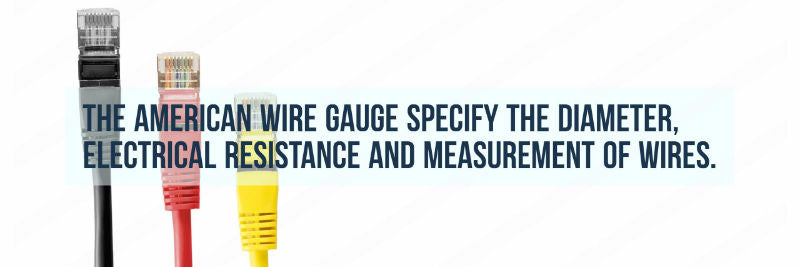The importance of the American Wire Gauge (AWG) for Ethernet patch cables

The American Wire Gauge (typically known as AWG) is an index that species the diameter, electrical resistance and measurement of electrical wires.
Gauge helps users to know the current-carrying capacity of round, solid, nonferrous, electrically conducting wires by using the cross-sectional area of the wire as a defining aspect.
As its name suggest, the American Wire Gauge is a system used in North America and has been around since 1857. It is also known as Brown and Sharpe wire gauge.
The system is counter-intuitive, which means the lower the AWG number, the thicker the conductor.
Here’s why
Every time a metal blank is pulled through a wire die, it gets a little bit thinner and longer.
Therefore, the AWG refers to the number of sizing dies a metal needs to be drawn through to get the accurate diameter, which means a 24 AWG wire has been drawn through 24 sizing dies.
The AWG system is based on 44 standardized wire sizes and ranges from 0 to 40, but it also contains 00,000 and 0000 gauges, referring to the thickest wires.
Why does the AWG matter?
Given that cable’s gauge indicate the thickness of the conductor through which electrons flow, the cable’s conductor must be increased in order to reduce resistance and allow a better transmission.The TIA 568-C.2 standard specifies that Ethernet patch cords should consist of four balanced twister-pairs of 22 AWG to 26 AWG (0.4039 to 0.6452 millimeters) solid or stranded conductors.
Patch cords with smaller gauge are not suggested for Power over Ethernet (PoE) equipment and devices because of their conductor resistance produces a lot more heat, which can cause the conductor to exceed the cable temperature and reduce power.

Sadly...
Though the cable’s gauge is really important, is not the most significant aspect when it comes to category cables’ performance.
What’s the most important element of a cable?
Well, there are two significant aspects:
- The twisting rate
- High-quality copper.
What you have to keep in mind when buying cables and thinking about the American Wire Gauge is that they comply with the 22 AWG and 26 AWG TIA standard.
However the AWG is useful when you want to know characteristics like the wire resistance or frequency transmission.






